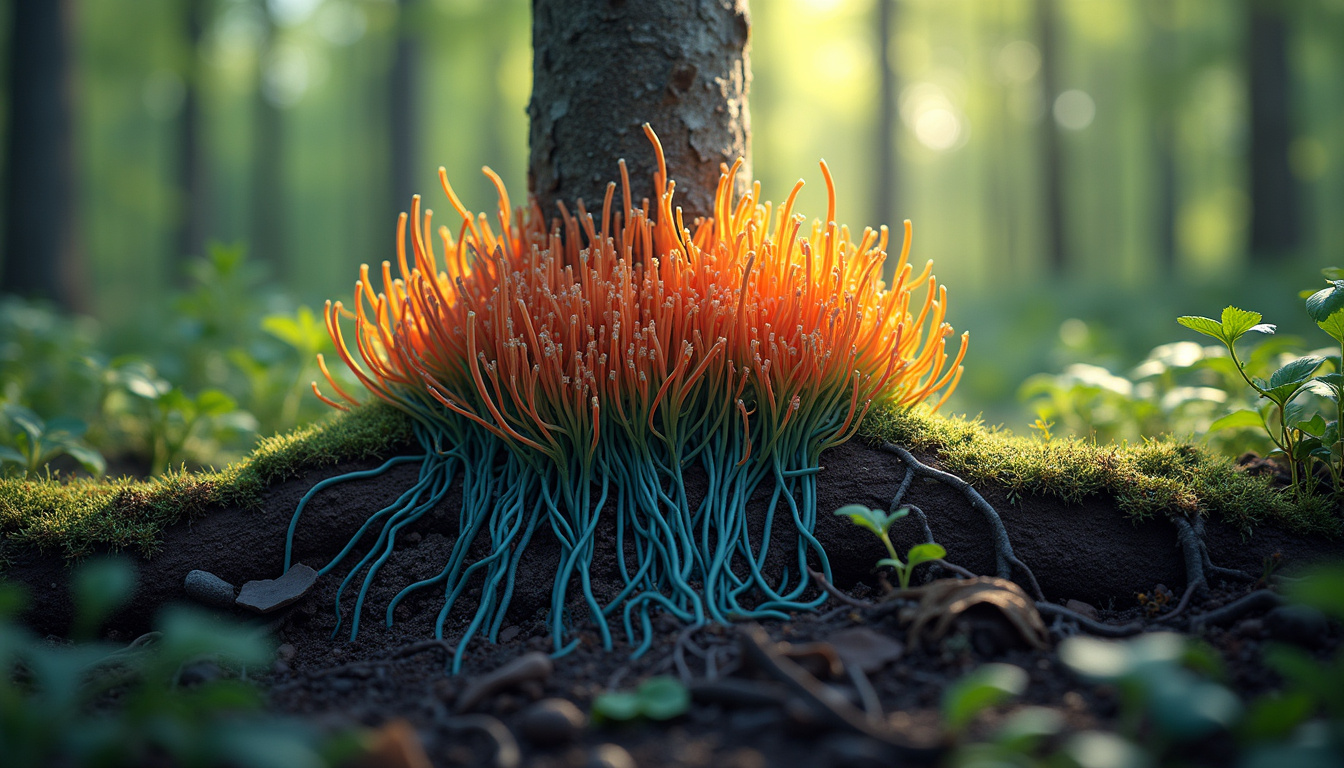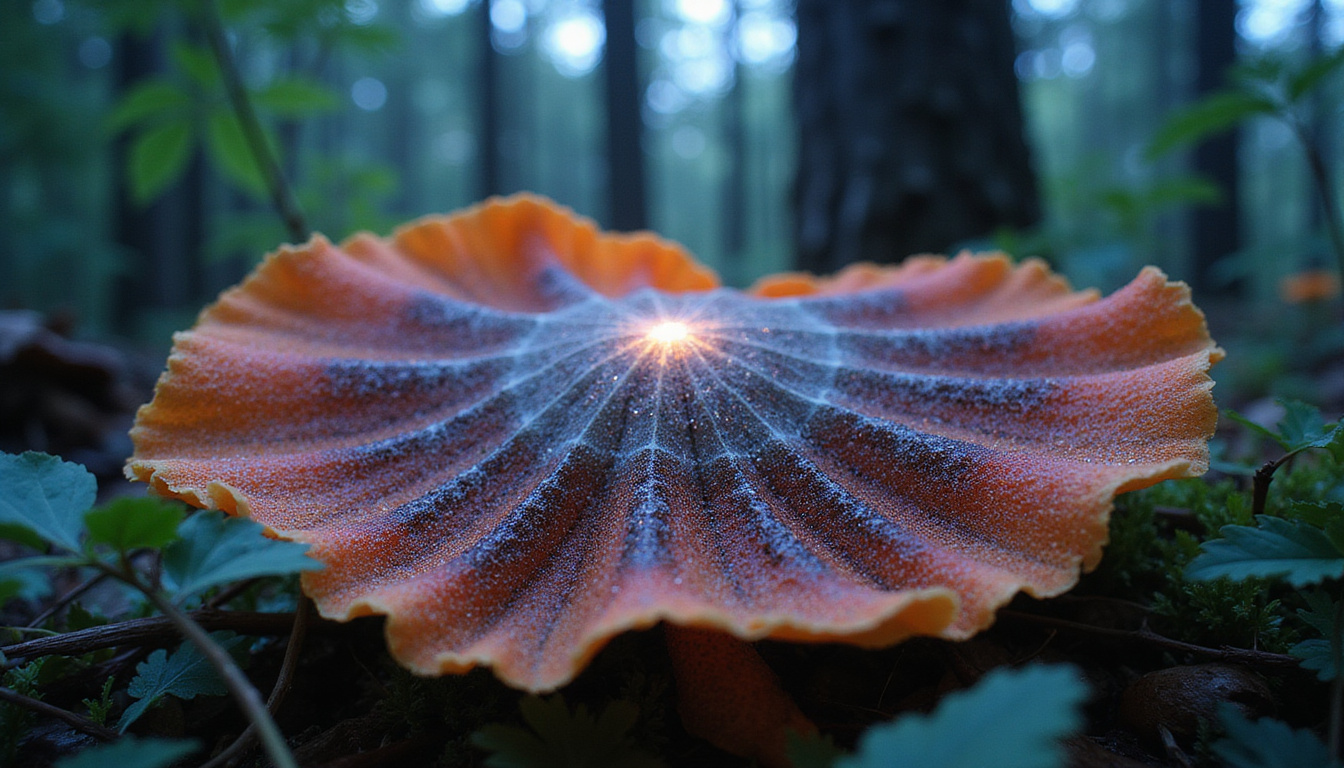In life on Earth, mycelium intrigues.
Beneath soil and decaying matter, mycelium hides.
It connects nature, supports plants, and offers solutions for humans.
This guide explores mycelium’s parts, its role in the wild, and its potential in agriculture, medicine, and more.
What Is Mycelium? An Introduction to Nature’s Fungal Network
Mycelium is the fungus’s body.
It consists of many thin, branching threads called hyphae.
These threads stretch through soil, wood, or organic matter.
We see mushrooms above, but mycelium works underground.
It gathers food and connects the ecosystem.
Mycelium acts like nature’s internet.
It links plants and other living things.
It helps exchange nutrients, boosts plant strength, and breaks down matter.
This network maintains life’s balance.
The Ecological Role of Mycelium
Nutrient Recycling and Decomposition
Mycelium breaks down dead leaves, wood, and organic remains.
It uses enzymes to split substances into nutrients.
This process enriches soil and helps plants grow.
Symbiotic Relationships with Plants: Mycorrhizae
Many plants pair with mycelium in a bond called mycorrhizae.
In this pair:
• Mycelium grows close to the plant roots, taking up water and minerals.
• The plant gives the fungus carbohydrates from photosynthesis.
This mutual link makes plants strong and fields fruitful.
Soil Structure and Health
Mycelium holds soil particles together.
It improves air flow, water retention, and stops erosion.
This network forms a home for microbes, insects, and plants.

The Benefits of Mycelium for Humans
Sustainable Agriculture and Farming
Mycelium products like mushroom compost and organic fertilizers help farming.
They improve soil, cut back on chemicals, and make crops strong against disease and stress.
Mycelium in Medicine and Health
Research shows mycelium can improve health.
Some strains yield compounds that fight bacteria and viruses.
Mycelium extracts may boost immunity and support wellness.
Eco-Friendly Packaging and Materials
Mycelium grows into firm, biodegradable shapes.
This growth offers a green substitute for plastic.
Companies now make:
• Packaging materials,
• Sustainable textiles, and
• Building blocks using mycelium.
Growing and Cultivating Mycelium
Getting Started with Mycelium Cultivation
To grow mycelium, gather these things:
• Sterilized substrate (sawdust, straw, or coffee grounds),
• Mycelium spawn (from grain or syringe), and
• Containers in a controlled space (with the right temperature and humidity).
Step-by-Step Growing Process
- Preparation: Sterilize the substrate to remove unwanted life.
- Inoculation: Mix mycelium spawn into the clean substrate.
- Incubation: Place the mix in a dark, warm spot (65-75°F or 18-24°C) until mycelium takes over every part of the substrate.
- Fruiting: Open the area to light and fresh air to trigger mushroom growth or use the mycelium to enrich soil.
Key Tips for Success
Keep things sterile during inoculation to stop contamination.
Watch the temperature and moisture closely.
Be patient; mycelium grows slowly over several weeks.
Innovative Applications of Mycelium
Mycelium-Based Packaging and Building Materials
Startups use mycelium to craft biodegradable packaging, insulation, and composite materials.
This work cuts waste, lowers carbon footprints, and supports sustainable manufacturing.
Mycoremediation: Cleaning Up Pollution
Mycelium can break down pollutants like hydrocarbons and pesticides.
It serves as a tool for cleaning up the environment.
Future of Mycelium in Technology and Medicine
Scientists now study mycelium for:
• Creating eco-friendly textiles,
• Forming bioartificial tissues, and
• Making green adhesives and glues.
Why Mycelium Represents the Future of Sustainability
Mycelium offers natural, sustainable fixes.
It decomposes waste, boosts plant growth, and builds biodegradable materials.
This work fits well with a circular economy and eco-friendly ideas.
Frequently Asked Questions (FAQs)
-
What role does mycelium play in nature?
Mycelium decomposes waste, recycles nutrients, and links plants with underground networks. -
How do I start growing mycelium at home?
Buy spawn and substrate, sterilize your materials, and keep the environment controlled.
Many kits and guides exist for beginners. -
How does mycelium support sustainable farming?
It improves soil by recycling nutrients, helps plants grow, and reduces the need for chemicals.
Conclusion: Embrace the Power of Mycelium
Mycelium is the hidden network beneath our feet.
It sustains nature, supports plant life, and offers new uses for humans.
Understanding mycelium leads us toward a more sustainable, healthy future.
Whether you are a gardener, an environmentalist, or an innovator,
explore mycelium to connect with nature’s powerful, simple systems.
Ready to tap into nature’s own design?
Start growing, studying, or applying mycelium today and join the move toward a greener planet.

Leave a Reply